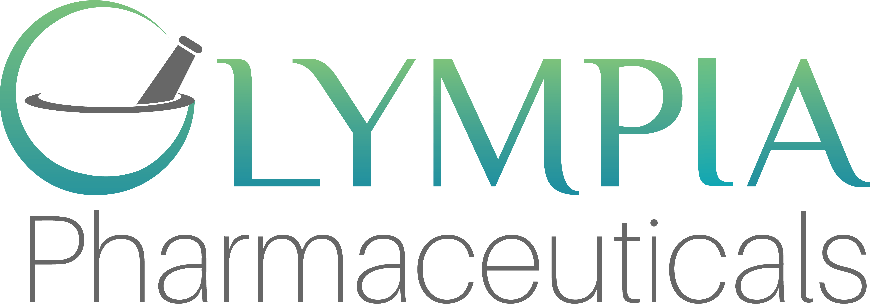Vitamin IV Therapy Pros and Cons
If you’re someone considering vitamin IV therapy but aren’t yet sure if it’s safe or even right for you, you (understandably) need both sides of the equation to make the most informed decision. That’s why we’ve compiled some of the most common pros and cons of vitamin IV therapy for you to review and take into consideration before proceeding.
First, an Intro to Vitamin IV Therapy

Vitamin IV therapy (also referred to as IV nutrient therapy, IV therapy, IV nutritional therapy and intravenous therapy) is a type of therapy commonly used for a variety of health benefits, including age management, improved immunity, illness prevention, detoxification and more. Many also use IV therapy to quickly rehydrate after a major sporting event, to relieve symptoms of a hangover and to help rejuvenate skin.
While there are a variety of different formulas available to choose from, almost all IV nutrition kits consist of a unique blend of highly potent vitamins, minerals or other nutrients. These solutions are injected directly into the bloodstream (by a trained medical professional), which can lead to faster, more effective results than if consumed orally. In fact, according to Dena Westphalen, PharmD—a clinical pharmacist at Healthline—she claims: “While you’re undergoing an IV vitamin drip, your body is receiving a higher concentration of the vitamins themselves. A vitamin that’s taken by mouth gets broken down in the stomach and digestive tract, and is limited on how much can be absorbed (50 percent). If, however, the vitamin is given through an IV, it’s absorbed at a much higher percentage (90 percent).”
The infusion process can take anywhere between 20 minutes and an hour and should always be administered and monitored by a licensed medical professional.
The Pros
There are many benefits that may result from the use of vitamin IV therapy. Here are some of the most common reasons patients opt for this form of nutrient therapy:
Quick Absorption

One major benefit of vitamin IV therapy is that the nutrients packed into each dose can be absorbed into the body quickly. As mentioned previously, because it’s administered directly into the bloodstream, those nutrients can be absorbed at a much higher percentage (90 percent). That unlocks the potential for significantly faster results, giving patients a quick and easy experience that doesn’t require too much of a time commitment.
Energy Booster
Many patients turn to IV therapy to help reverse the symptoms of fatigue and a slowed metabolism. Some products, like Olympia Pharmacy’s Get-Up-And-Go IV Kit, are designed for just that. With mixtures that include ingredients like B-complex vitamins and essential amino acids, IV therapy may help patients get a kickstart in their metabolism and feel more energized throughout the day.
Anti-Aging Combatant
When it comes to aging, everyone’s body responds differently. Some may see the most change in their skin, hair and nails, while others may be more affected in their energy levels.
While there are other anti-aging options available to help with age management, like using anti-aging creams or dermal fillers, it’s important to note that utilizing vitamin IV therapy is often regarded by physicians as a quick and potent treatment because it’s administered directly into the bloodstream and enters a person’s system within seconds.
In addition to exercising, sleeping well, drinking lots of water and consuming water-rich foods (like melons, cucumbers, celery, tomatoes, etc.) on a regular basis, IV therapy can be a great complementary method of helping replenish fluids and combat the signs of aging.
Immunity Strengthener
In addition to regular toxins and bacteria our immune systems have to fight off on a regular basis, our immunity has really been put to the test over the past few months. That’s why it’s important to take care of our bodies to ensure they’re as strong and resilient as possible and can fight off threats to our health.
Recovery & Performance Enhancer
IV nutrient therapy may also be used to accelerate recovery time after an injury or workout as well as improving athletic performance. Depending on the individual, IV therapy could help reduce inflammation and recover sore muscles more quickly, especially if the infusion consists of ingredients like Vitamin C, amino acids and other essential nutrients.
Allergy & Inflammation Reducer
Some IV nutrition therapies can also be used to combat allergies and chronic pain. Potential benefits of using an infusion designed for these issues may include: alleviated stress, reduced pain, fewer migraines, more resistance to allergy-inducing irritants, improved immunity and more.
The Cons
Many patients find IV therapy to be beneficial, but it’s important to also consider some of the potential cons there may be before making your decision. Here are some of the most widely found cons associated with vitamin IV therapy.
Costly Pricing

Depending on the medical office and type of IV treatment used, IV therapy can be more on the expensive side. Many common infusions can range between $100 and $200 per treatment.
While IV therapy does offer the immediate release of nutrients because it’s administered intravenously, there are other ways to absorb these nutrients, including drinking fluids, taking vitamins, etc. — which can be much cheaper and still very effective. Some may see the value in the investment, but for others on a tight budget, this may pose a problem if the price is too high.
Potential Vitamin or Mineral Overdose
As with many things in life, balance is key. If administered improperly or in excess, there may be a risk for health complications associated with vitamin or mineral overdose.
Healthline’s Lindsay Slowiczek, PharmD, says: “There’s the risk of getting ‘too much of a good thing’ with IV vitamin drips. It is possible to receive too much of a specific vitamin or mineral, which can increase the risk of adverse effects. For example, people with kidney disease cannot remove certain electrolytes and minerals from the body very quickly. People with certain heart or blood pressure conditions can also be at risk of fluid overload from the infusion. In general, excessive levels of vitamins and minerals can be hard on the organs and should be avoided.”
With vitamin IV therapy, it’s important that a licensed professional administers and monitors each patient’s treatment, as there’s always a risk of putting too much of any one vitamin or mineral into their system if not done correctly.
Risk of Infection
Any time an IV is administered, there will always be a risk for infection. This is because IVs open up a direct path into the bloodstream and don’t allow the body a chance to fight against any bacteria that may be entering the person’s system directly. Although infections are very uncommon in IV therapy, it’s still extremely important that a licensed professional administers the infusion and monitors it while in progress.
To Sum It Up
There are many important vitamin IV therapy pros and cons to consider before testing it out for yourself. The most important thing to do at this stage is: research (what you’re doing right now). Speak with your doctor to see if IV therapy is a good option for you, as they may be able to provide insight on any underlying vitamin or mineral deficiencies you may have that can be remedied by this form of treatment. They may also be able to tell you if you’re a person who could be at a higher risk of a negative reaction to the infusion. But most importantly, while you’re researching, ensure any potential medical offices or IV pharmacies you’d be using for IV therapy are professionals and licensed to administer the solution safely and effectively.
Want to continue your research and learn more about IV nutrient therapy?



